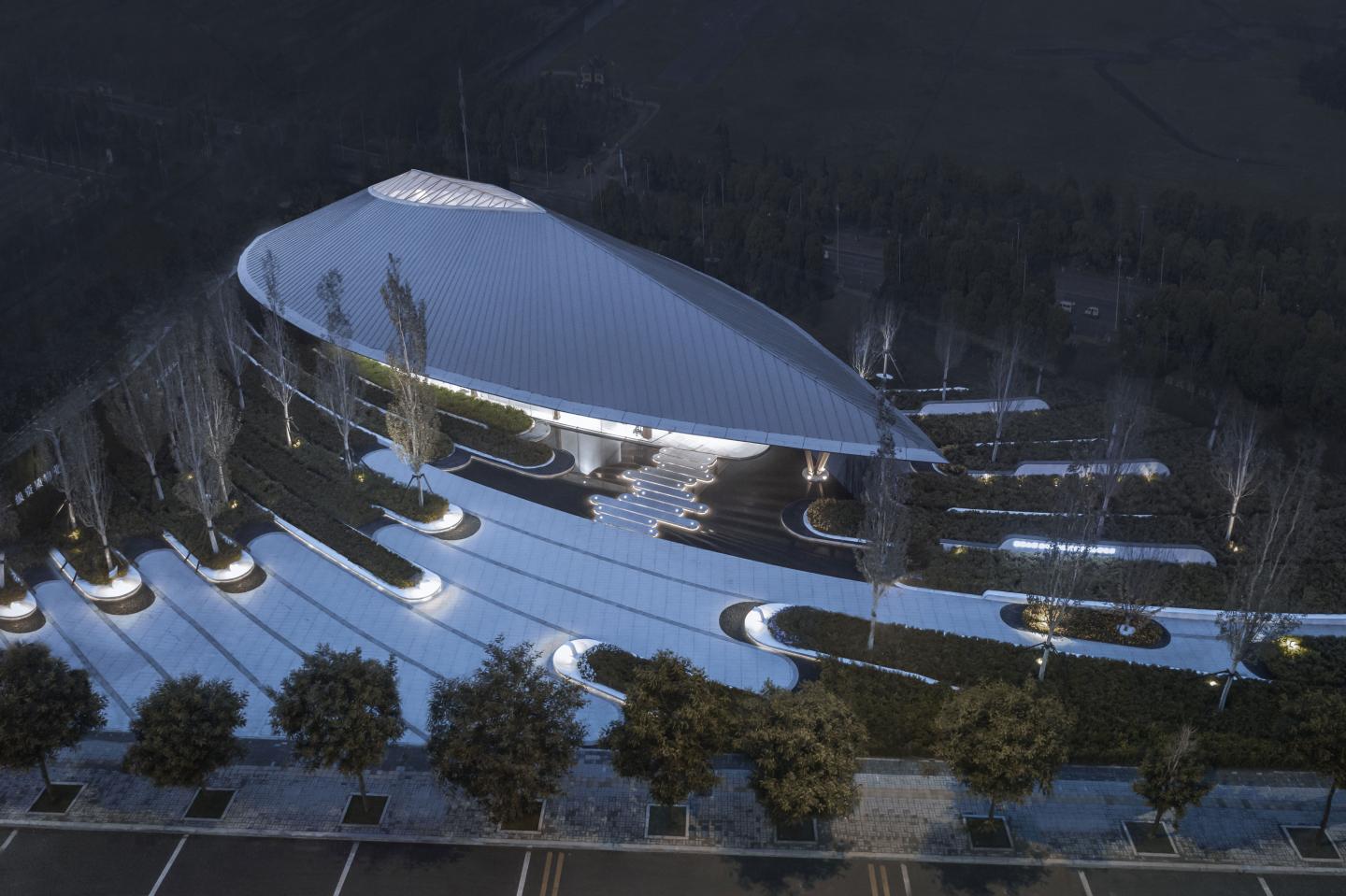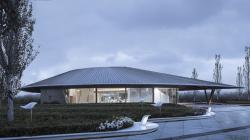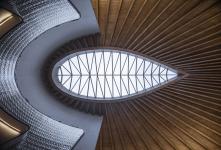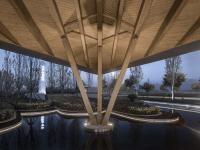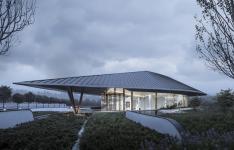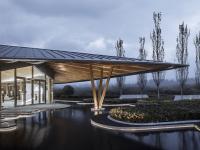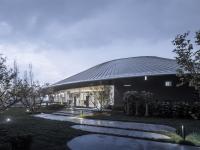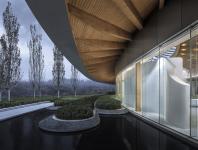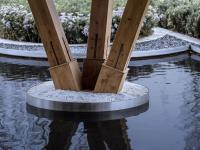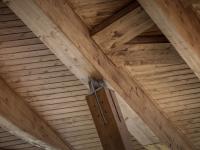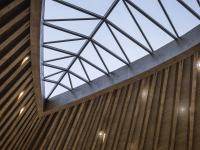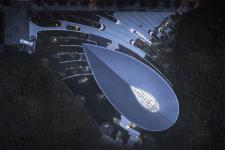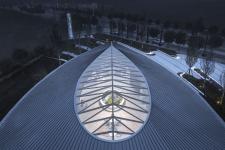Numerous rivers converge in Tianjin, bringing thousands of years of canal transport. Among which Yongding River runs thousands of miles from the north to the sea. The project is located on the side of the winding tributary of Yongding River. In an endless meadow without a clear edge, the relationship between the building and the environment is the sense of floating.
The design started from the roof, we tried to use symbolic architectural language to establish a connection with historical environment. Imagining a crystal clear water drop that would quietly dissolve into the endless and winding river, its metaphorical polysemy develops.
In the eyes of architects, it is a drop of water; in the eyes of children, it is more like a leaf, representing the hope of spring; in the farmers' eyes, it might be a shining seed; in the eyes of historians, it might be a drop of tears. Or it could also be oilpaper umbrellas, helmets, beetles, high heels...
The water drop shape is placed into the site diagonally, which not only elongates the traffic flow from the city interface to the entrance, but also makes the water drop shape more apparent. The far-reaching cornice and extensive use of glass present a floating roof. Accompanied by the swaying shadow of the trees, the roof provides a charming tranquility.
The building does not have a clear main entrance but used three exposed diagonal wooden posts at the front to define the entrance space. The size of the wooden posts’ cross section is similar to that of the surrounding tree trunks, making it easier to blend into the environment, thus enhance the floating roof.
Before entering the exhibition space, one enters a lowered transitional space under the eaves and then gradually steps under the leaf-shaped skylight. We deliberately lowered the interference from direct daylight by controlling the size of the skylight, so as to ensure the soft and quiet atmosphere inside.
The biggest challenge we faced implementing this project is the large span and overhang in the structure. After several rounds of structural tests, we finished this umbrella-shaped spoke arch architecture consists of three circular steel beams and 68 radial red pine beams.
The interior has 8 wooden pillars and 3 diagonal wooden pillars at the front end. Structurally, we realized a 34.0mx14.5m indoor pillar-free area and a 3.7m outdoor cantilever. Using smoke-gray aluminum-magnesium-manganese shingles, ultra-white tempered glass, and the spruce ceiling, the leaf-shaped exterior contour completes the expression of the microscopic force.
Tianjin Zexin Exhibition Center has a 11 meter space under the eve, a single large-scale display space. The cavity of roof board and inclined beam, as well as the cavity of main ring beam are used to hide all pipelines including water, electricity and air conditioning.
2019
2020
Project location Beicheng district, Tianjing, Hebei province, China
Photo credits Yijie Hu
Gross Built Area (square meters) 450
RUF ARCHITECTS
Tianjin Zarsion Exhibition Center by RUF Architects in China won the WA Award Cycle 35. Please find below the WA Award poster for this project.
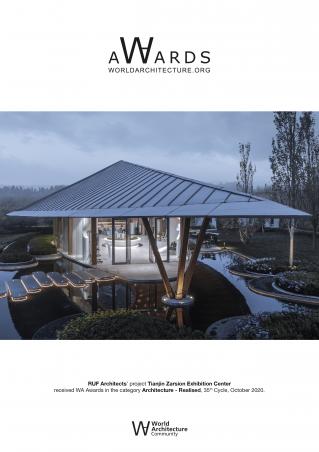
Downloaded 31 times.
Favorited 3 times
